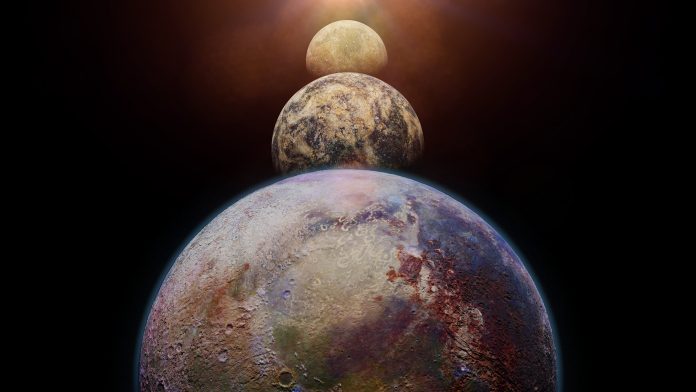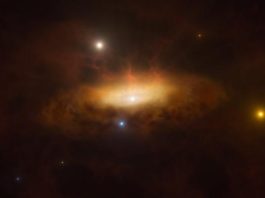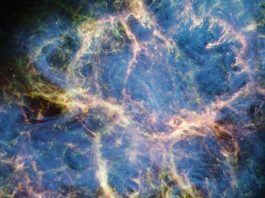An international team of researchers have discovered three potentially habitable super-Earth exoplanets orbiting a relatively nearby orange dwarf star.
The three super-Earths are orbiting Star HD 48498, located approximately 55 light-years from Earth.
The team, led by Dr Shweta Dalal from the University of Exeter, found that the orange star is somewhat similar to our Sun.
This discovery is the closest planetary system to host a Super-Earth in the habitable zone around a Sun-like star.
The work is published in the journal MNRAS.
The super-Earth exoplanets could potentially support life
The three super-Earths orbit their host star in seven, 38, and 151 Earth days, respectively.
Remarkably, the outermost exoplanet candidate lies within the habitable zone of its star, where conditions might permit liquid water to exist without boiling or freezing.
This area, commonly known as the Goldilocks zone, is deemed ideal for potentially supporting life.
Dr Dalal said: “The discovery of this Super-Earth in the habitable zone around an orange star is an exciting step forward in our quest to find habitable planets around solar-type stars.”
The super-Earths were identified using HARPS-N Rocky Planet Search programme
Over a decade, the team collected nearly 190 high-precision radial velocity measurements using the HARPS-N spectrograph.
Radial velocity measurements track the star’s subtle movements caused by orbiting planets.
These measurements are important in exoplanet discoveries.
By analysing the spectrum of light from the star, researchers can determine whether it is moving towards us (blueshift) or away from us (redshift).
The system is a promising target for high-contrast imaging
The researchers identified three planetary candidates with minimum masses between five and 11 times that of Earth.
The team proposed that the star’s proximity, along with the favourable orbit of the outermost planet, makes this system an excellent target for future high-contrast direct imaging and high-resolution spectroscopic studies.
Future discovery of habitable super-Earth exoplanets
Dr Dalal concluded: “This discovery highlights the importance of long-term monitoring and advanced techniques in uncovering the secrets of distant star systems. We are eager to continue our observations and look for additional planets in the system.”
The discovery will pave the way for understanding the potential for life beyond our solar system.









